|
|
|
|
|
People First
Words convey beliefs and attitudes. A teacher's belief in his or her students has a measurable effect on learning. Teachers must always take care to speak and behave in a manner that will affirm a student's potential as a person -- not condemn the student to a history of assessments and labels.
We are the total of our future potential. People First Language (PFL) is an active demonstration that it is not enough to merely acknowledge and tolerate cultural differences -- we must value and appreciate them. Proponents of PFL say students with disabilities are not their disability -- they are students Words matter. There may be detractors of People First Language who would argue that it is a heavy-handed "political correctness" movement. Some might object to the idea of the so-called "word police" controlling everyone's free speech to suit a small minority. Such arguments are perfectly valid as it concerns an imposition of arbitrary, useless verbiage. PFL is simply insisting on accuracy and truth. It's awfully hard to argue that the promotion of the proper use of terms is arbitrary and therefore an imposition. Furthermore statistics show that PFL isn't referring to a small minority of people. It's vital to eliminate prejudicial language if we are to eliminate prejudice. PFL aims to break down such barriers to growth and learning with an active choice to -- first -- affirm and uplift all people of all cultures. People matter. How we speak to and about students is critical to growth. Culture and language are so closely linked, it is impossible to consider one without considering the other. Culturally responsive teaching then, cannot be separated from culturally responsible language -- both verbal and physical. Considering just the numbers of diagnosed disabilities, one in ten children is likely to be a student with previously identified special needs. The improbable statistical breakdown by race, as evidenced from the course materials and charts in Chapter 1 of the course text, is concrete proof of cultural bias in the system. There is a disproportionate number of students of color assigned to special education. This is particularly pronounced in the area of intellectual and developmental disabilities (IDD). All too often, Black male students are being labeled early on as IDD and then forgotten about. Many never recover from the discrimination. So yes, free speech matters, and teachers must see that speech frees each student to reach his or her potential. Specific notes on PFL from the Texas Council for Developmental Disabilities:
National Center to Improve Practice (NCIP) Association for Supervision and Curriculum Development (ASCD) Awesome Library - Directory for Parents Internet Resource for Special Children National Association for Gifted Children (NAGC) The Arc of the United States Children with Exceptionalities
An exceptional learner is any individual whose physical, mental, or behavioral performance deviates so substantially from average that additional support is needed to meet their needs. The difference must occur to an extent that the child requires either a modification of school practices or special educational services to develop his or her unique capabilities. One in every ten children may be classified as Exceptional 6.0 million children can be classified in one of the categories of Exceptional children Thirteen Legal Categories for a person with a disability by IDEA
Historical Overview – Courts
Individuals with Disabilities Education Act Amendments of 1990 (PL 101-476) Individuals with Disabilities Education Act Amendments of 1997 (PL 105-17) IDEA 2004 - (PL 108-446) 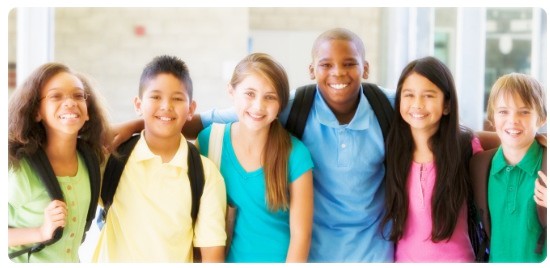
Early Intervention Early intervention serves these purposes:
Children are put at risk by:
Prevention includes:
Ways to detect disabilities after birth:
Multidisciplinary team members include:
Developmentally appropriate practice means:
Differentiated Instruction may involve adapting . . . learning environment, curriculum content, teaching strategies and technology. (Teach-nology.com) Children with Learning Disabilities Specific Learning Disability A SLD is a disorder in one or more of the basic psychological processes involved in understanding or in using language, spoken or written, which disorder may manifest itself in the imperfect ability to listen, think, speak, read, write, spell, or do mathematical calculations. This includes such conditions as perceptual disabilities, brain injury, minimal brain dysfunction, dyslexia, and developmental aphasia. SLD does not include a learning problem that is primarily the result of visual, hearing, or motor disabilities, of mental retardation, of emotional disturbance, or of environmental, cultural, or economic disadvantage. Forty-Eight percent of all children receiving special education have a learning disability. Characteristics of students with learning disabilities:
Adapting the learning environment:
Adapting teaching strategies:
Types of teaching strategies:
Children with Emotional and Behavior Disorders Emotional Behavioral Disorder (EBD), Socially Emotionally Disturbed (SED) "The definition of EBD has many problems associated with it. One problem is that it places all responsibility for the problem on the child and none on the environment in which the child exists, thus making it the responsibility of the special education program to change the child—but not the learning environment, which can be considerably flawed" (Nelson, Crabtree, Marchand-Martella, & Martella, 1998). Intervention strategies for students with emotional or behavior disorders:
Adapting the learning environment:
Benefits of inclusion in the general education classroom:
Strategies for Managing Behavior:
Gifted and Talented Students Gardner's multiple intelligences:
Ways to adapt the learning environment for gifted and talented children:
Ways to adapt curriculum:
Ways to adapt teaching strategies:
Critical features of problem-based learning:
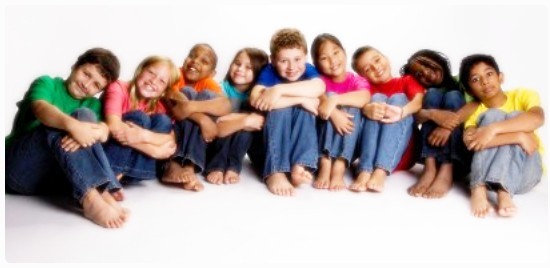
Autism Society of America (ASA) Autism Spectrum Disorder Federal definition: A developmental disability significantly affecting verbal and nonverbal communication and social interaction, usually evident before age 3, that adversely affects a child's educational performance. Other characteristics often associated with autism are engagement in repetitive activities and stereotyped movement, resistance to environmental change or change in daily routines, and unusual sensory experiences. Leo Kanner first described children who had significant impairments in their social functioning and language skills. In 1944, Viennese physician Hans Asperger described another type of autism within the autism spectrum disorder. One of the distinguishing characteristics of students with Asperger's syndrome (AS) is an observable developmental imbalance. On the one hand, they can be of average or superior intelligence; on the other, they are unfailingly years behind in social development. Later on, in England, Michael Rutter (1996) reported a study that compared children diagnosed as autistic with children who displayed other emotional disorders. He found three characteristics that almost always were present in the children with autism, but only occasionally in children with emotional disorders: (1) failure to develop social relationships, (2) language retardation with impaired comprehension, and (3) ritualistic or compulsive behaviors. Bettelheim and others believed during the 1960s and 1970s that autism was caused by cold and unfeeling mothers. Currently there is widespread acceptance that autism is a neurophysiological condition. Other Health Impairments include: Asthma, ADD/ADHD, Cystic fibrosis, HIV/AIDS, Heart defects, Cancer, Diabetes, Substance Abuse, Hemophilia, Lead poisoning, Leukemia, TORCH infections, Rheumatic Fever, Sickle cell anemia, Meningitis/ encephalitis and Hepatitis B. Considerations for the General Education Teacher
Population of High Incidence Children 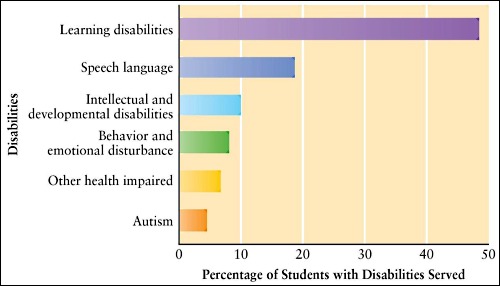
Population of Low Incidence Children 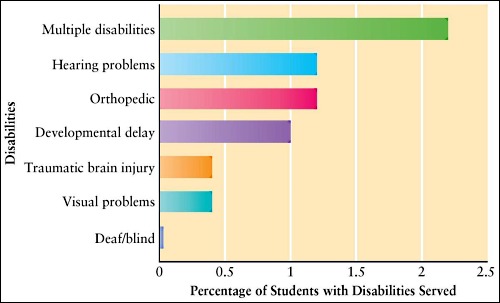
Percentages by Race and Ethnicity 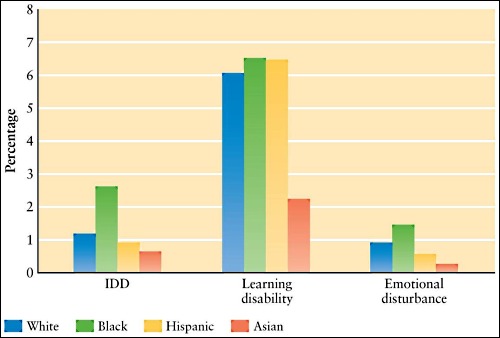
|